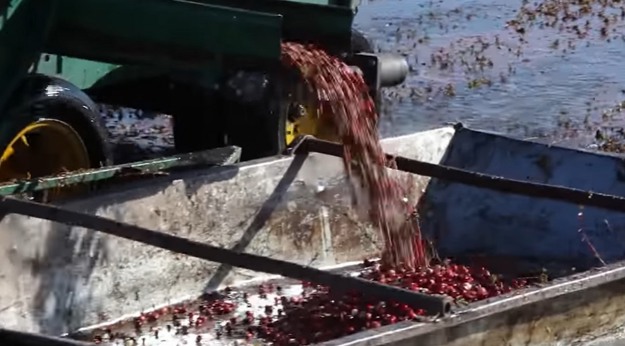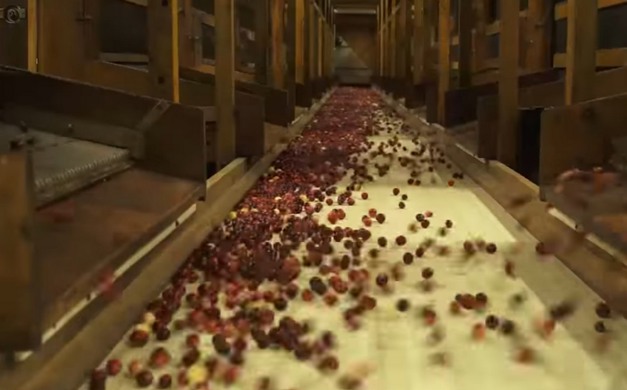Wisconsin is close to finishing harvesting what looks to be a good to normal-sized crop of cranberries. “Habelman Bros., the grower we’re representing, will be done in eight to 10 days. That might be an early end, though we usually finish at the end of October or early November,” says Claus Von Bauer of The Cranberry Network.
 Photos: Habelman Bros.
Photos: Habelman Bros.
This harvest follows a good growing season that included a warm spell of about 10 days in September into the beginning of October. “That’s a real challenge for packing fresh fruit,” says Von Bauer. “We need the cold nights to get good color at that time of year. Overall, Wisconsin cranberries look good with excellent quality and packing yields.”
That’s a stark contrast to regions such as Quebec which, following last year’s large crop, are down by about 40-50 percent in volume this year. “They had a wet growing season with a lot of humidity as well as poor quality, so the beginning of the season was poor,” says Von Bauer. “They harvested the early fruit but the pack out was lower than usual, though it’s now back up to 80-85 percent with the later varieties.”

Fresh demand up
At the same time, the demand for fresh cranberries has grown. “We believe it’s largely because of Ocean Spray which has lost packing capacity mainly in Massachusetts but also a bit in Wisconsin,” says Von Bauer.
All of this means there’s an approximate 10 percent price increase on fresh cranberries over last year.

Meanwhile, in processing cranberries, which is the lion’s share of the cranberry market, there continue to be challenges. “The majority of the production in processing is for dried cranberries and the projections last year were quite high and not met because of economic slowdowns in both Europe and China,” says Von Bauer. In turn, the price dropped on dried cranberries--however, pricing increased on juice concentrate. Because there was less dried product produced this year, it has meant there’s less juice too, from which to produce concentrate.
Looking ahead, some cranberry growers in Wisconsin have been renovating beds that are 50-60 years old and are planting newer, higher-yield varietals. While that’s an exciting development right now, the industry remains watchful that in the next four to five years, there won’t be an oversupply situation.
 For more information:
For more information:
Claus Von Bauer
The Cranberry Network
Tel: +1 (514) 426-8880 x 101
[email protected]
http://www.thecranberrynetwork.com/
